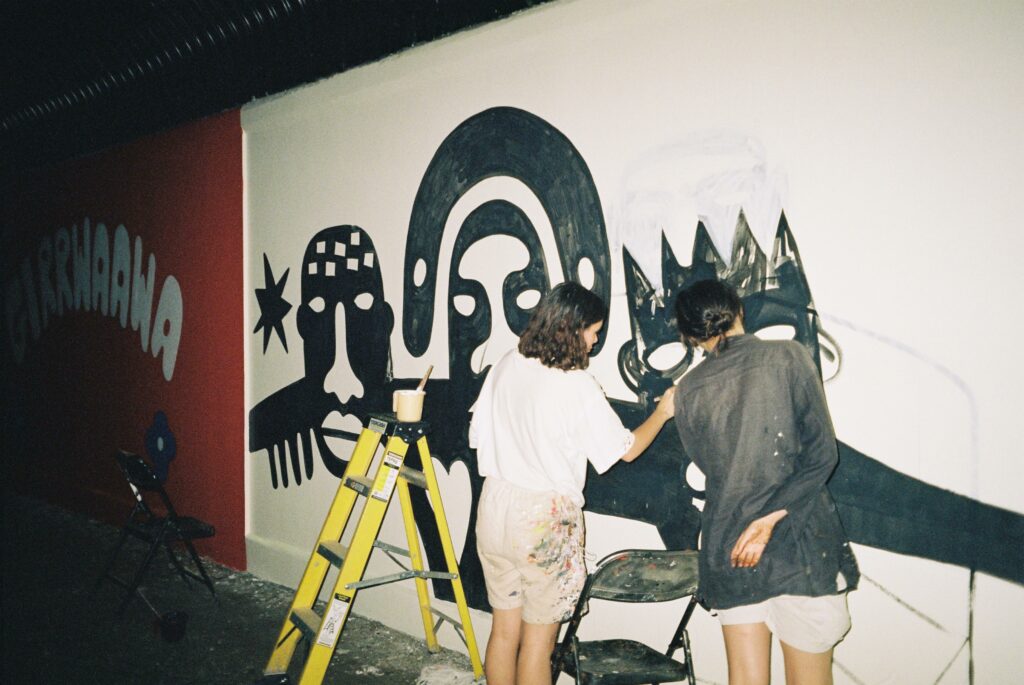
Aretha and Rebecca. Photo: Tyler Bain
In October 2022, I found myself in India working alongside Gumbaynggirr artist and friend, Aretha Brown. Aretha was commissioned by the Australian High Commission in New Delhi, to create a 122 metre mural, running along the chancery’s perimeter. Hailing from the Gumbaynggirr peoples and language group, the mural’s title, Girrwaawa, translates to ‘come together.’ A nod not only to Aretha’s mob in Nambucca Heads but also her love of the Beatles. Commissioned as a part of the Australian Government’s ongoing public diplomacy program with India, the project also marked India’s seventy-five years since gaining independence from the British Empire in 1947. Throughout the creative process, Aretha and I worked together with fellow Naarm-based artist and filmmaker Tyler Bain and the formidable women of the Aravani Art Project — an Indian public art collective, run by trans and cis women.
The Aravani Art Project works to create large-scale public murals throughout India and champion the voices of Indian women who are unrelentingly sidelined by patriarchal hegemony. The day-to day working environment cultivated by the Arvani Art Project is a practical way to create safe and inclusive spaces, encourage exchange, discussion and openness between one another. During our time working with the Aravani Art Project, art revealed itself as a medium that transcended language, crossed cultures and was a tangible field for reclaiming public spaces women historically have been shunned from. Our days were spent on a green stretch of grass across from Nehru Park, next to a main road where tuktuks, bikes and cars zipped past. While painting our mural, people quizzically gazed at the commotion we had initiated in south Delhi, which is typically the more up-market region of Delhi, dotted with various embassies and key political landmarks. We had two weeks to paint over the 122 metres of the grey, prison-esque Commission wall. The wall was divided into twenty-four smaller panels punctuated by concrete columns, so each section became a chapter of the larger narrative painting. Aretha’s personal anecdotes were translated into paint and simultaneously spoke to sisterhood and cultural practice within a wider contemporary landscape.
We had planned to paint twelve metres of wall per day; an ambitious feat that we were slightly nervous about finishing on time. Upon meeting Karnika, our project leader from Aravani, she cheekily assured us that the mural could be finished in five days if we wanted. As we began painting, our intimidation of the task was quickly quelled as many hands made light work. This was the first time one of Aretha’s murals had been painted in colour. As India is widely renowned for its rich colours, it felt important to make Girrwaawa alive to the city it inhabits. Indian ornamentation, textiles and colour informed the work’s palette. The palette of Girrwaawa mirrored the Aravani women’s wardrobes.
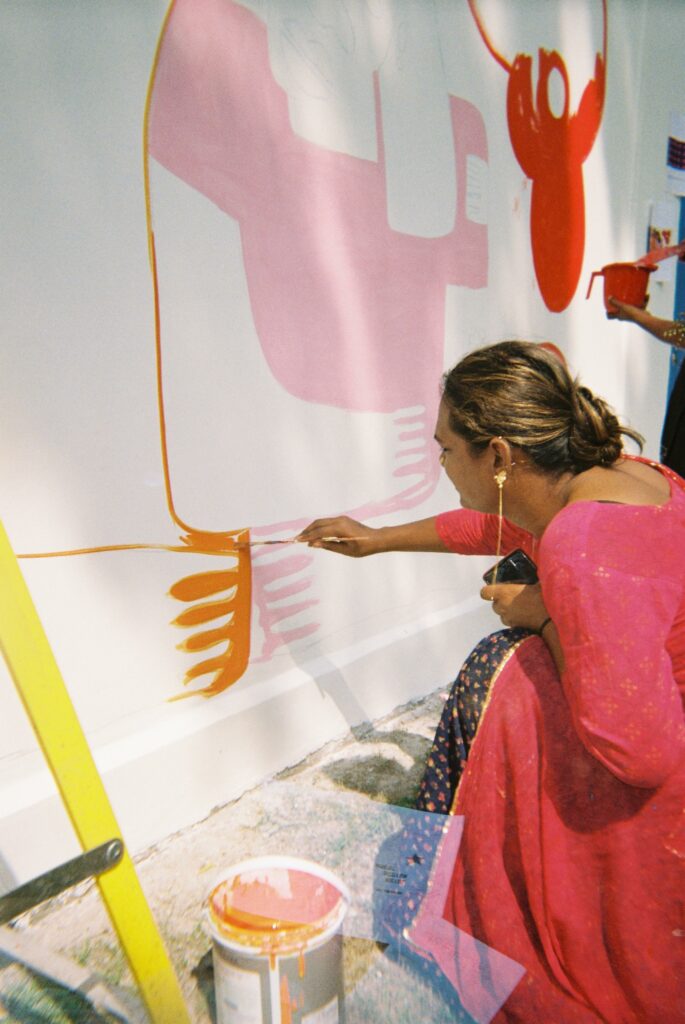
Karnika Painting. Photo: Tyler Bain
Many of the women involved in Aravani were homemakers who bore the responsibility of ensuring their family’s wellbeing. Some of the women worked in organisations that sought to ensure the education of underprivileged women while others were learning to be tailors. The ongoing patriarchal culture means that many women are dissuaded to seek opportunities outside of the home. For 23 year old Anushka, working on Girrwaawa was her first time navigating Delhi’s complex public transport system by herself; a simple but not small act of finding her own way in the world. In resisting restrictive notions of women’s assumed roles, these women are creating ways to survive whilst forging their own paths beyond the constraints of domestic spaces. Each day’s labour was broken up with conversation over routine chai breaks. Aretha, Tyler and I couldn’t speak Hindi and only a few of the women knew English, but regardless of any immediate language barriers, snippets of different women’s stories unfolded in these idle moments. Much of our conversation was translated by Karnika, whilst the tone of these stories was gleaned from gestures.
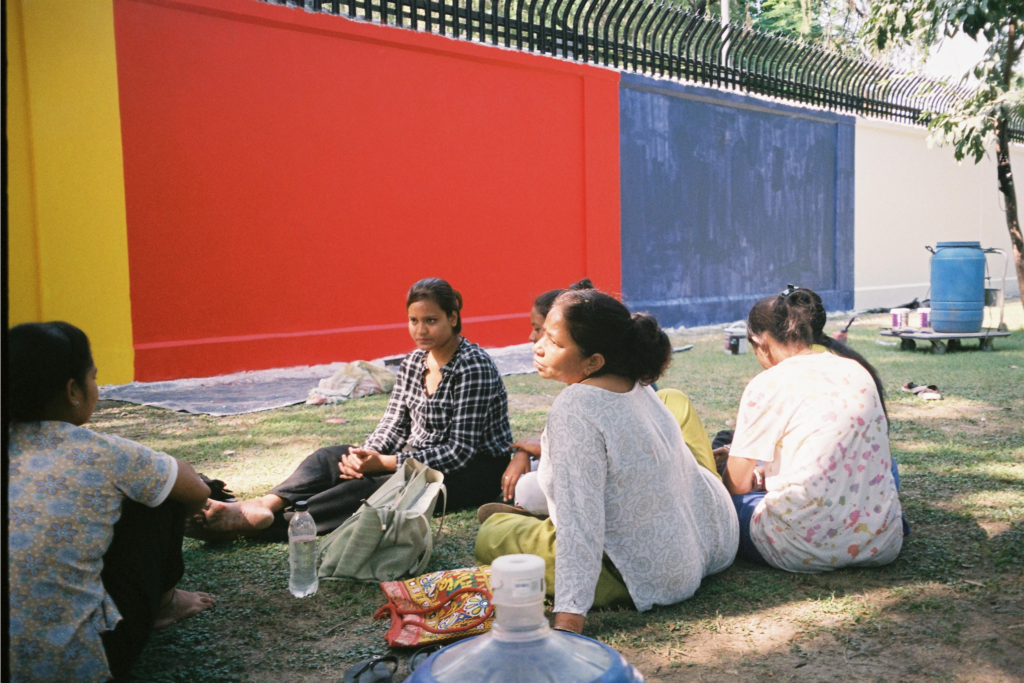
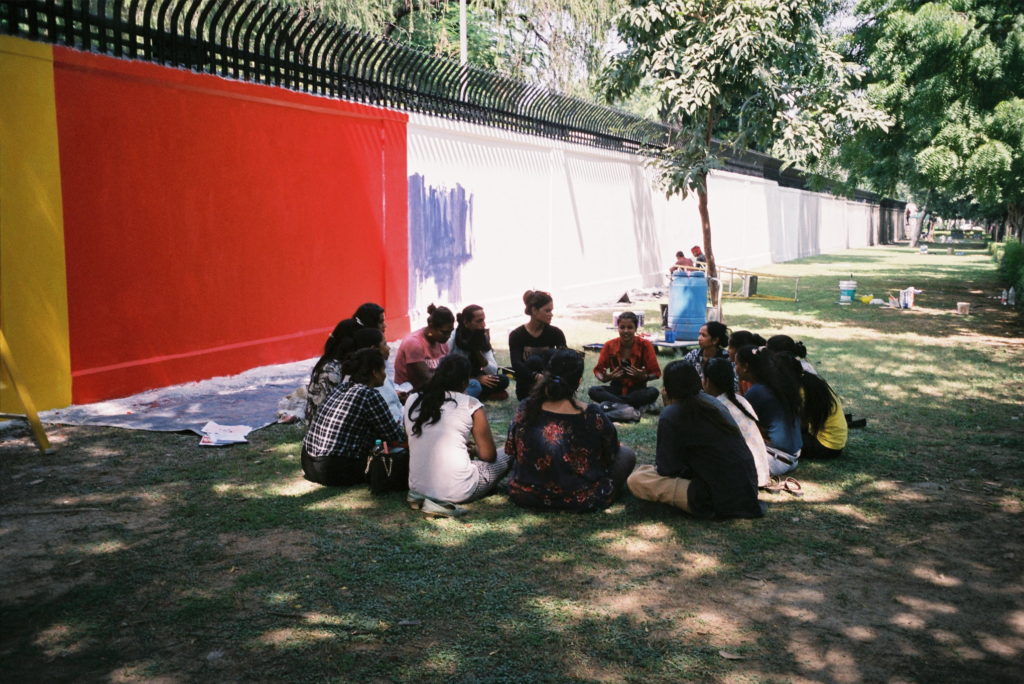
Tea Break. Photo: Tyler Bain
Being a semi-foreigner to India — my mother’s family migrated to Melbourne from Bangalore in the 1970s — I am familiar with reticent stories from the women in my family, surrounding their experience with the persistent undervaluing of their work and dismissal of their voices. While being ebullient and generous people, one senses they simultaneously hold an unmovable toughness and grit, establishing themselves as autonomous women in the world. As we continued with Girrwaawa, I recognised familiar qualities between my relatives and the women we were painting with: defiantly joyful against the dominating narrative which demands they be meek. This lightness of spirit, grounded in a persisting strength, is imbued in the visual language of Girrwaawa. The painting’s vivacious colours and definite shapes, seen in its repeated depictions of flora and relationship, impart these traditionally feminine subjects as symbols of strength. Playfully placed within the composition and visually rebuffing broader associations with the feminine as feeble and easily disregarded. Throughout the making of Girrwaawa it became clear to me how impactful women coming together in public space can be; a work environment allowing women to feel safe, share experiences and belong. Art is a way for the Aravani women to claim ownership of their stories in exuberant colour and make their voices heard.
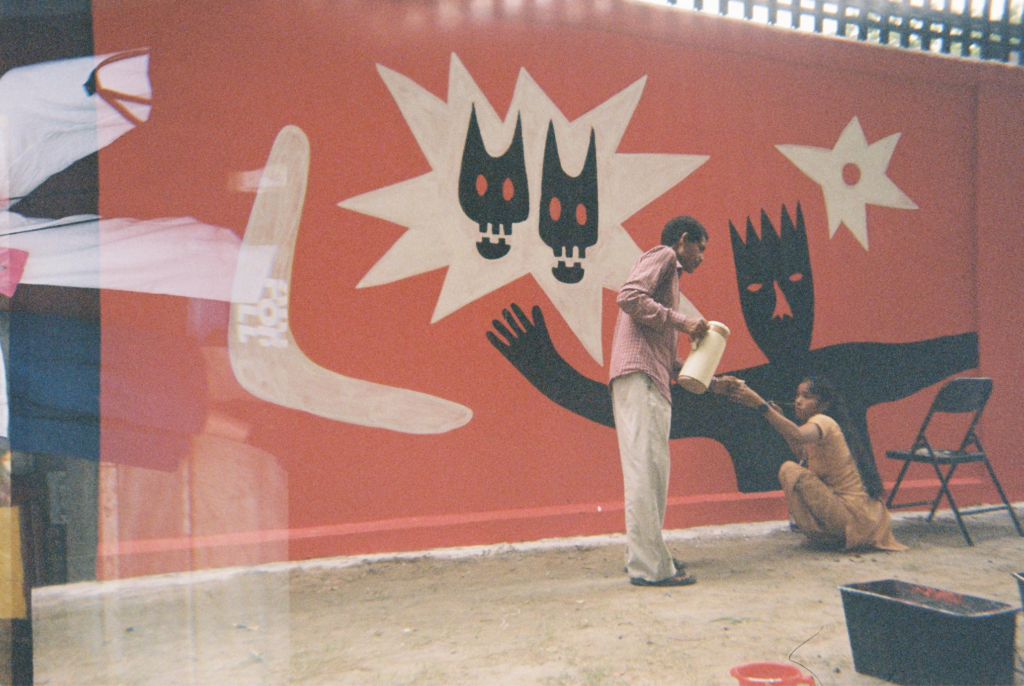
Chaiwala delivers Chai to Jyothi.
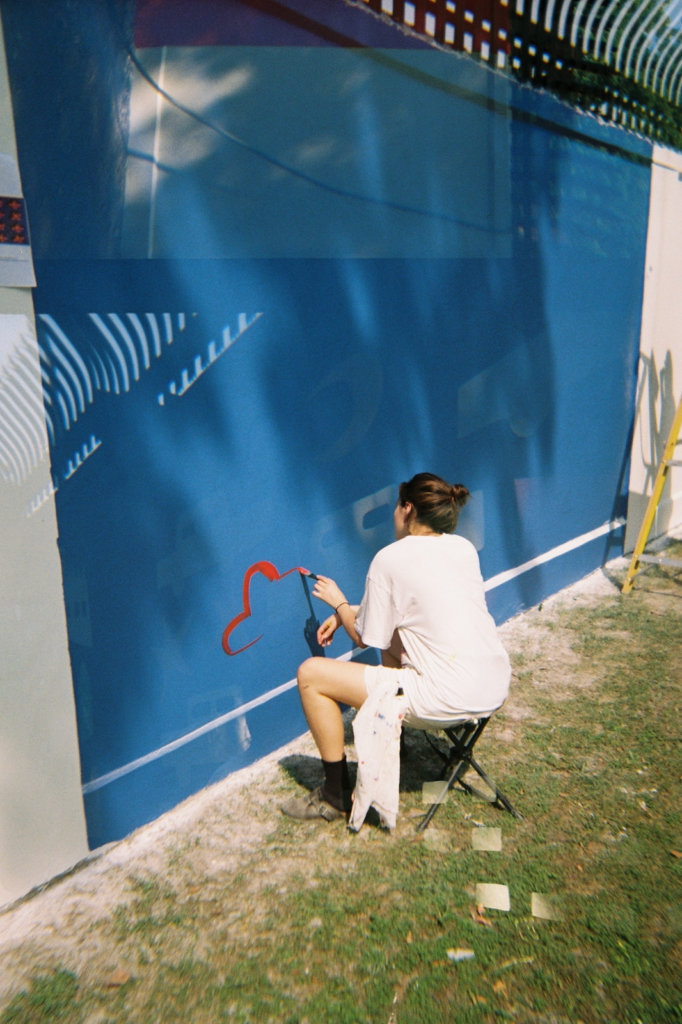
Painting.
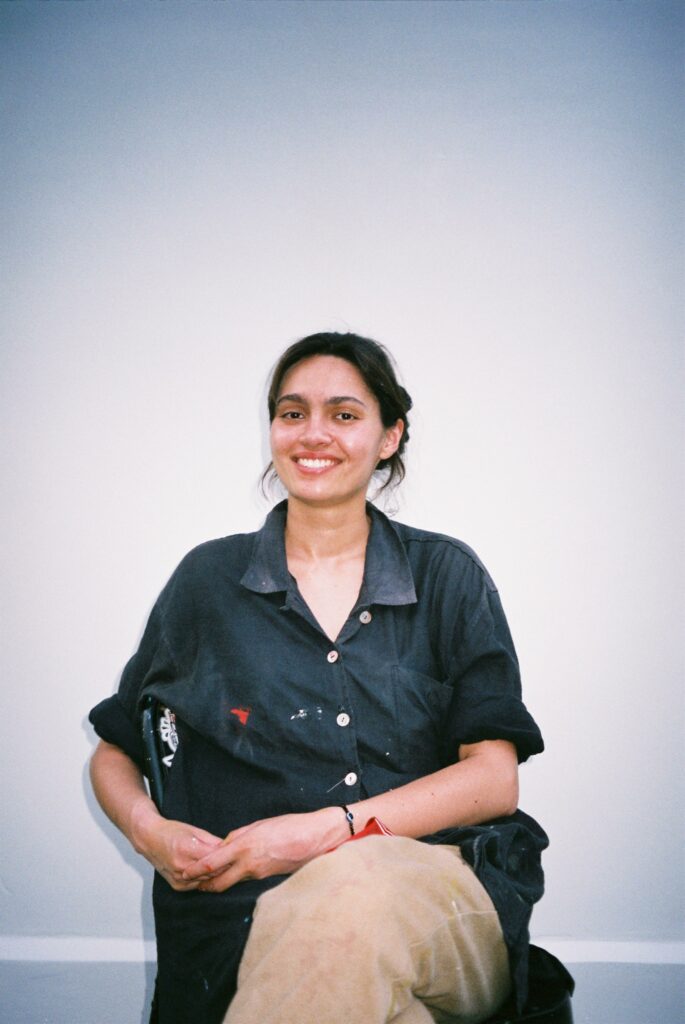
Rebecca.
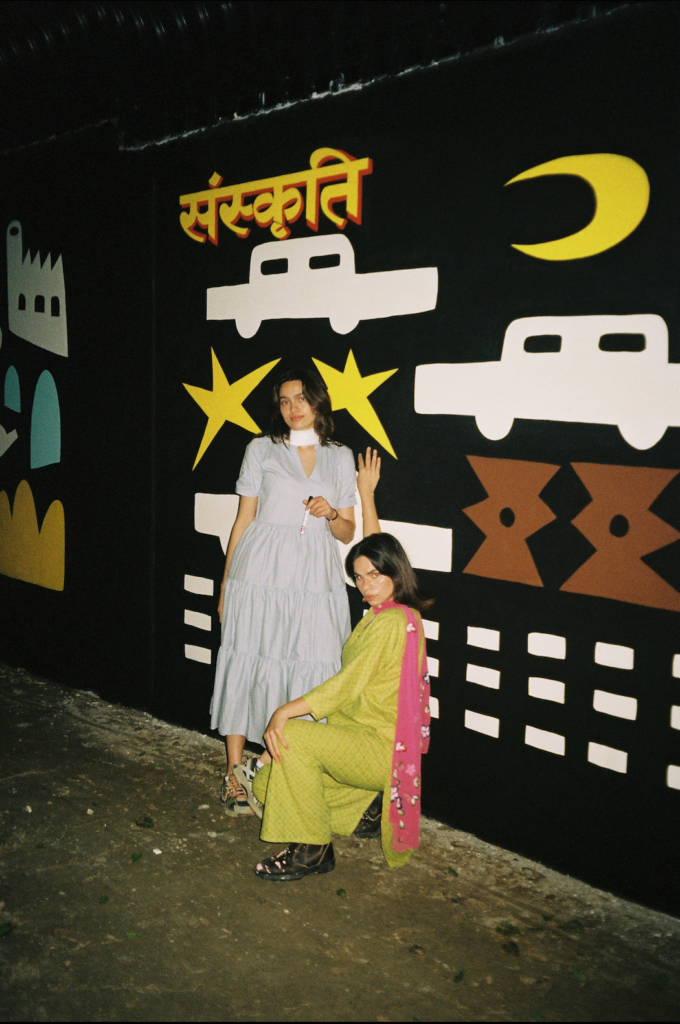
Aretha and Rebecca, New Delhi. All photos: Tyler Bain
